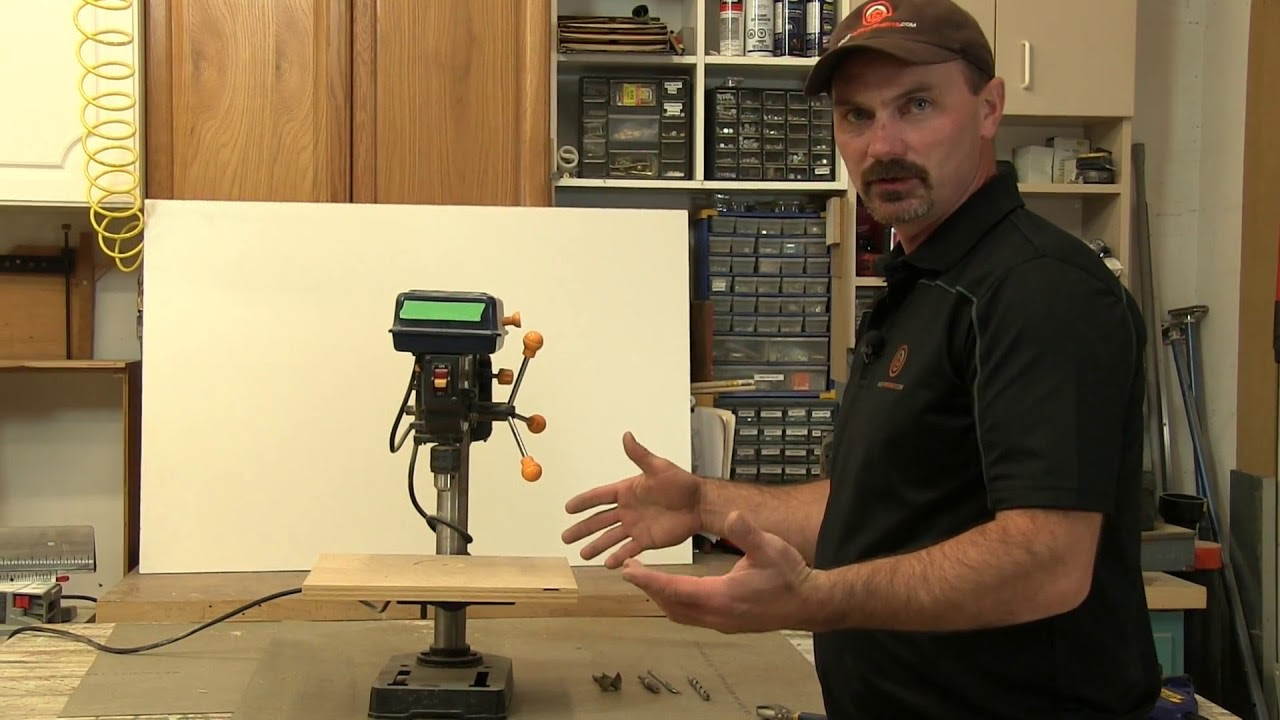I have a confession to make: I’m completely obsessed with drill presses. These mighty tools are not only my favorite, but they are also incredibly versatile. With the best drill bits, you can drill through almost anything effortlessly. Plus, they offer precision and accuracy that is hard to achieve with a hand drill. Whether you’re a seasoned DIY enthusiast or a beginner looking to step up your game, I’m here to guide you on how to use a drill press like a pro.
What is a Drill Press?
A drill press is a drill mounted on a column. What sets it apart from a hand drill is its ability to align the bit perfectly perpendicular to the material you’re working with. This means no more crooked holes! Trust me, when you start building something more intricate than a planter box, having perfectly perpendicular holes dramatically improves the quality of your project. It ensures that parts fit together securely and seamlessly. Additionally, drill presses allow you to create repeatable holes at a consistent depth, which can be challenging when drilling by hand.
How does a Drill Press Work?
All drill presses have the same basic parts. They consist of a head and motor mounted on a column, with an adjustable table. The drill press head contains the on/off switch, the arbor (spindle), and the drill chuck. By rotating a group of handles on the side, you can raise and lower the drill chuck, allowing you to drill holes up to three inches deep without adjusting the table height.
To use a drill press, place your material on the table and either hold it in place or use clamps. Position the table so that the drill bit aligns with the desired drilling point. The speed of the rotating bit is usually controlled by a series of step belts or a variable-speed motor. Always consult a speed chart to determine the appropriate speed for the material and drill bit size you’re using.
When you’re ready to drill, turn on the drill press and slowly feed the bit into the material using one of the handles. The amount of pressure you apply depends on the material you’re drilling. For example, steel requires more pressure than wood. Remember to use a sharp bit, and you should see shavings (not dust) coming out as you drill. When drilling metal, the correct amount of pressure is indicated when shavings come out as one long spiral.
What Type of Drill Press Should You Buy?
When it comes to drill presses, there are several types to choose from. Let’s take a closer look at the most common ones:
Benchtop Drill Presses
Benchtop drill presses are smaller in size but offer all the features of their larger counterparts. They are perfect for beginners or those with limited workshop space. These compact tools can easily fit on a workbench while still delivering great performance.
Full Size/Floor Models
If you need extra power and the ability to drill larger holes in tougher materials, full-size or floor models are the way to go. These sturdy machines are designed for heavy-duty tasks and come with larger motors and chucks. They also offer more clearance between the column and the center of the drill bit, allowing you to work with larger materials.
Radial Drill Presses
Radial drill presses have both a vertical and a horizontal column, enabling you to drill into the center of larger workpieces. While these machines are fantastic for certain applications, they can be quite expensive and take up a significant amount of space. Make sure to securely fasten them to prevent accidents.
Magnetic Drill Presses (Mag Drills)
Magnetic drill presses, also known as mag drills, are commonly used in industries like fabrication, shipbuilding, and construction. Instead of a central column and table, they feature a powerful electromagnetic base that sticks to steel surfaces, even when positioned upside down. These drills are perfect for working on structural steel or other magnetic surfaces.
FAQs
1. Can I use a drill press as a sander?
Yes, with the right accessories, you can transform your drill press into a sander. There are attachments available that allow you to sand curves and shapes, making your drill press even more versatile.
2. Are drill press tables adjustable?
Most drill presses come with adjustable tables that can be tilted to drill holes at an angle. However, it’s always a good idea to double-check the specific model you’re considering to ensure it meets your needs.
3. How do I change the speed on a drill press?
Changing the speed on a drill press typically involves adjusting the belts in the head. By rearranging the belts on a series of step pulleys or using a variable-speed motor, you can achieve different speeds. Check the manufacturer’s instructions or consult a speed chart to determine the correct configuration for your specific application.
Conclusion
A drill press is an essential tool for any workshop. It provides precision, accuracy, and versatility that can elevate your DIY projects to new heights. Whether you choose a benchtop or a full-size model, a drill press will become your go-to tool for creating precise holes in various materials. Remember to prioritize safety by wearing protective gear and securing your materials properly. So, why wait? Embrace the world of drill presses and unlock your potential as a true DIY pro!

As the CEO of BestDrillPressforMetal.com, I take immense pride in our unwavering commitment to transformation and excellence in metalworking. I am driven and passionate about creating the best possible user experience for our customers and helping them achieve their goals with precision and innovation. With my guidance, we have established ourselves as a leader and trusted partner within the industry by leveraging cutting-edge technologies to push boundaries with incredible products that exceed expectations. We understand that metalworking is more than just a process; it is an art form made real through passion, dedication, and diligence—all of which embody our core values at BestDrillPressforMetal.com.

